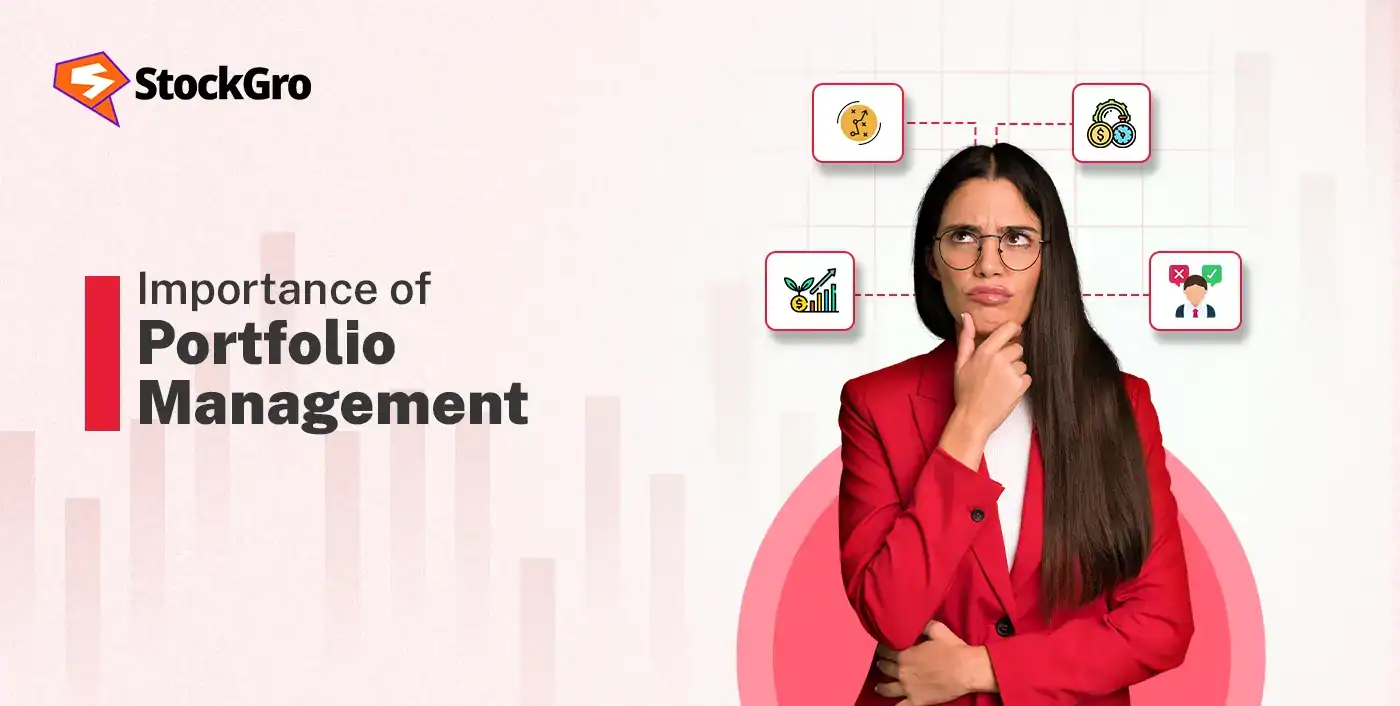
The PMS(portfolio management services)industry in India had AUM(assets Under Management) around ₹ 15.50 lakh crore in January 2019. This number has grown to ₹ 40 lakh crore in August 2025.
The process of selecting and managing a particular set of investments (known as the portfolio) to meet the financial goals of an investor is called portfolio management. Portfolio management is important because just like every investor, every portfolio is also unique. Factors such as investment goal, risk tolerance, and time horizon are the reasons behind it.
In this reading, you will develop a better understanding of the different types of portfolio management and the advantages of each type.
Types of Portfolio Management
We will now dive into the different types of portfolio management. On the basis of various determinants, portfolio management is classified into the following:
Based on management style:
- Active Portfolio Management
- Passive Portfolio Management
Based on the decision-making authority:
- Discretionary Portfolio Management
- Non-Discretionary Portfolio Management
Based on the time horizon:
- Strategic Portfolio Management
- Tactical Portfolio Management
Based on structure:
- Core Portfolio Strategy
- Satellite Portfolio Strategy
Active Portfolio Management
Active portfolio management is concerned with outperforming the benchmark it follows. The goal is to generate alpha(excess returns over the market returns). The portfolio manager has high involvement, executing high volumes of trade, trying to outperform the market.
Advantages:
- Higher return potential due to dynamic asset allocation
- Can be customized to the specific needs of the investor
- Flexible in nature, adaptable to changing market conditions
Suitable For: High-risk-tolerant investors who are willing to take more risks in hopes of higher returns.
Passive Portfolio Management
A passive portfolio management strategy is aimed at achieving similar results to the market. They replicate the market movements as the goal is to match the market returns.
Advantages:
- Easier to track and maintain the portfolio
- Lower fees due to lower management costs and transaction fees
- Provide stable returns in the long run, identical to the market.
Suitable for: Low-risk tolerance investors who try to avoid risks and are satisfied with steadier returns.
Discretionary Portfolio Management
Under discretionary portfolio management, the portfolio manager is given full authority by their clients to make decisions on their behalf.
Advantages:
- Better portfolio management as experts are in charge
- Faster decision-making in rapid market fluctuations
- Saves the investor the hassle of putting in time to gain market knowledge
Suitable For: People who want to grow their investments but do not have the time and/or interest in the market.
Non-Discretionary Portfolio Management
In the case of non-discretionary portfolio management, the portfolio manager acts as an advisor and only gives recommendations to their clients. It is up to the client to make decisions.
Advantages:
- More control over decisions
- Higher transparency in the portfolio management activities
Suitable For: Investors who manage their own portfolios and are looking for some expert input
Strategic Portfolio Management (Long-Term Allocation)
It is a long-term investment approach based on the investor’s goals, risk appetite, and time horizon. A fixed asset mix is maintained over time, and adjustments are made during periodic rebalancing.
Advantages:
- Alignment of portfolio with long-term investor needs
- Reduces the risk of market timing
- Simplification of portfolio through rebalancing
Tactical Portfolio Management (Short-Term Adjustments)
Short term investment approach that makes use of minor adjustments to benefit from market opportunities. The distribution of asset classes is changed based on the current market conditions.
Advantages:
- Helps in capturing short-term market opportunities
- Makes the portfolio more flexible
- Reduced the downside risk through diversification
Core & Satellite Portfolio Strategy
In this kind of strategy, a major part of the investments or the heavily weighted assets form the ‘core’ of the portfolio. The core is responsible for keeping the portfolio stable.
Smaller amounts or lighter-weight assets become the ‘satellite’ revolving around the ‘core. The role of satellites is to diversify the portfolio, which helps in risk mitigation. Satellites are also useful for generating higher returns than the market, thus improving the overall portfolio performance.
Generally, in a core and satellite portfolio strategy, 60-80% of investments are made in the ‘core’ assets, and the remaining 20-40% in the satellite assets.
Flexible Funds & Unified Managed Accounts (UMAs)
Flexible Funds, as the name suggests, are flexible, i.e., they can freely adjust the allocation of funds across different asset classes. These are special investment vehicles designed to profit from market fluctuations. Although they have a higher return potential, they carry a higher risk, too.
Unified Managed Accounts(UMAs) combine different types of investments such as equity shares, bonds, and mutual funds into a single account. This removes the need to maintain separate accounts and makes tracking easier.
High-net-worth individuals or HNIs use UMAs as they provide a comprehensive overview and make portfolio management easier.
Conclusion
The massive growth of the Portfolio Management Services(PMS) is evidence of the fact that portfolio management is an important part of today’s and the future’s financial landscape. Whether it be the high-risk risk high-reward approach or the steady, passive approach, whether wanting autonomy of decisions or trusting an expert, each type of portfolio management caters to the unique needs of each investor.
By understanding these strategies, investors can develop a management strategy of their own that leads them to the fulfillment of their financial objectives.
FAQs
Active, passive, discretionary, non-discretionary, core, and satellite are the main types of portfolio management.
In a discretionary style of management, the client gives full authority to the portfolio manager to make decisions on his behalf. On the other hand, in non-discretionary management, the portfolio manager only gives recommendations, and the client makes decisions based on them.
Strategic portfolio management focuses on the long-term investment needs of the investor, providing stability and wealth creation. Tactical portfolio management is concerned with making minor adjustments to take advantage of market opportunities or manage unforeseen risk.
The ‘core’ refers to the main part or heavy weightage of investments. The ‘core’ instruments are generally passive and have low cost. The ‘satellite’ is the investment that aims to beat the market by generating higher returns. They are riskier in nature but helpful for boosting the overall portfolio efficiency.
The core has a long-term horizon, while the satellite aims to move with short-term market fluctuations.
Flexible funds provide the option to shift between different asset classes based on market conditions. Their risky nature is better suited for experienced investors with an understanding of the market dynamics. Funds with moderate risks and steady returns over the years are more suitable for average investors.
An investor with long-term goals should adopt a strategic plan that is passive in nature. These strategies maintain a fixed asset structure aligned with the investment objective. Due to the higher time horizon, these strategies fully allow the compounding effect to take place, and the investor can enjoy its benefits in the long term.

